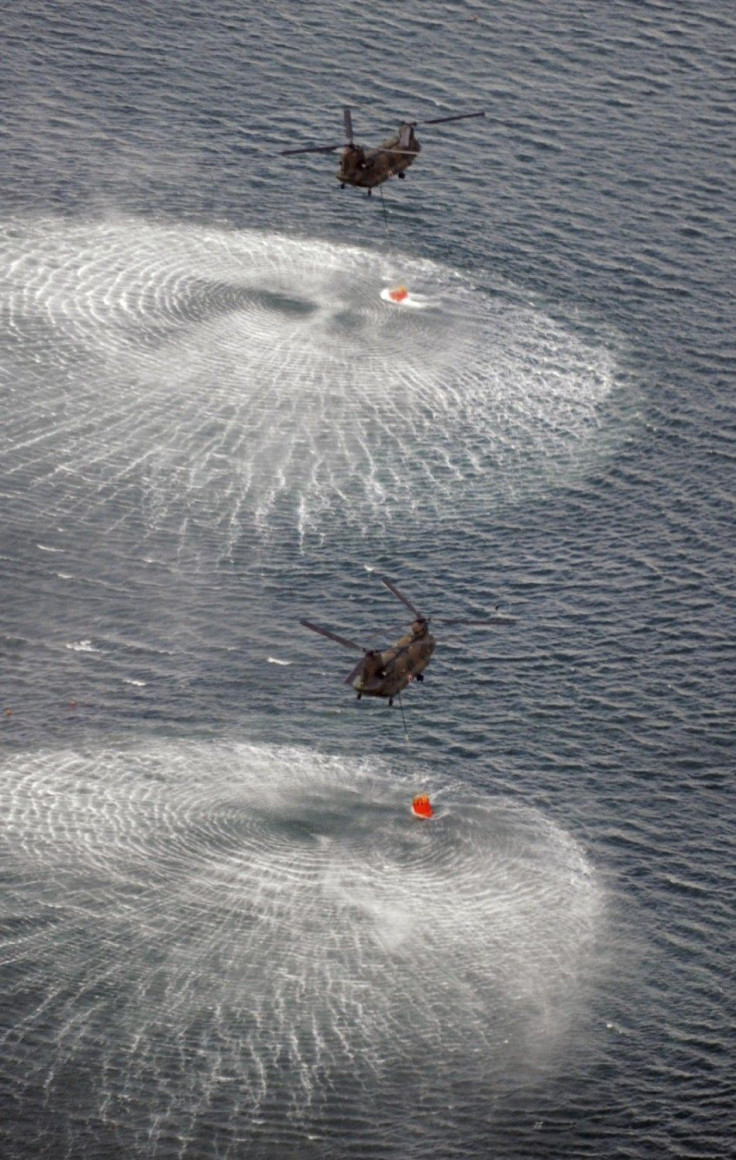Japan now fights radioactive water

Even as the workers at the crippled Fukushima Daiichi nuclear power plant scrambled to remove puddles of radioactive water, earthquake-torn Japan plunged into a fight against an apparent nuclear leak into the ocean causing a sharp spike in levels of radioactive iodine in seawater.
Tests done on seawater samples collected Friday morning have shown that the levels of radioactive iodine in the water are 1,250 times higher than normal, informed Japan's nuclear and industrial safety agency. The levels were 50 becquerels of radioactive iodine per cubic centimeters of water. This compares to 4 becquerels, 104 times above normal.
In a televised press conference, an agency spokesman, Hidehiko Nishiyama, said, This figure means that if you drank 500 millilitres of water containing this level of iodine it would reach the limit that a person can take in in one year, which is one millisievert. This is a relatively high level.
CNN quoted an official with the Tokyo's Electric Power Co. (TEPCO) as revealing that the spike in radioactive levels in seawater just offshore the Fukushima Daiichi nuclear plant may not be due atmosphere emissions or rain alone, instead due to some sort of leakage directly into the ocean.
On the positive side, the distressing reports on the surge in the level of radioactivity in seawater come while the radiation levels in air have reportedly declined.
At 7 a.m. Saturday, radiation at the plant's main gate were 0.219 millisieverts per hour -- a fraction of the 400 millisieverts per hour measured between Units 3 and 4 on March 15, TEPCO said on its website.
The International Atomic Agency reported Friday that radiation in and around the plant continues to decrease.
The Fukushima Daiichi nuclear power plant, located 240 kilometers (150 miles) north of Tokyo, has been the centre of global attention following the 9.0-magnitude earthquake that stuck Japan's Pacific Coast due to the possibility of a nuclear meltdown that could led to a catastrophe. The March 11 quake also triggered a tsunami. The natural disaster has claimed at least 10,000 lives and has left 17,000 missing.
Meanwhile at the plant Saturday, engineers scrambled to pump out puddles of radioactive water, which injured three workers besides hampering efforts to cool reactors to prevent a meltdown. Radioactive water has been found in buildings of three of the six reactors at the power complex 240 km (150 miles) north of Tokyo, Reuters reported.
Three workers sustained burns at reactor No. 3 on Thursday after being exposed to radiation levels 10,000 times higher than usually found in a reactor. Two of the workers were also rushed to a hospital.
Bailing out accumulated water from the turbine housing units before radiation levels rise further is becoming very important, Japan Nuclear and Industrial Safety Agency senior official Hidehiko Nishiyama is quoted as saying.
We are working out ways of safely bailing out the water so that it does not get out into the environment, and we are making preparations, Nishiyama added.
He, however, ruled out a possibility of a crack.
There is no data suggesting a crack, he said, after clarifying that high radiation reading could be from venting operations to release pressure or water leakage from pipes or valves.
As the world watches the situation at the damaged Fukushima plant closely, the U.N. Secretary-General Ban Ki-moon called for reassessment of the international atomic safety regime. Ban stressed on the need to take stock of the international response to the latest developments at Japan's Fukushima Dai-ichi nuclear power plant. Urging states to consider lessons learned from Japan, he encouraged adoption of innovative measures to strengthen nuclear safety.
© Copyright IBTimes 2024. All rights reserved.











